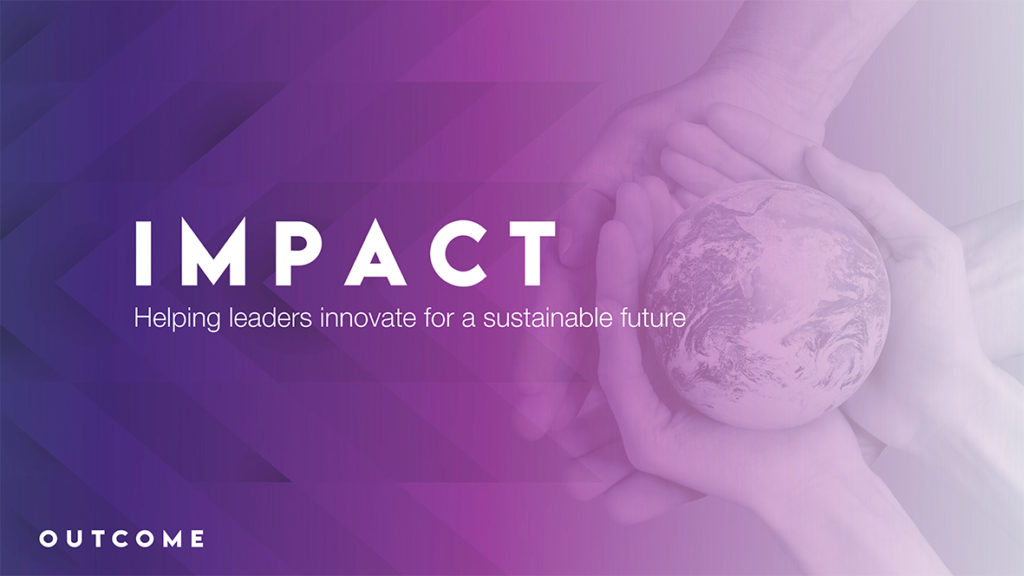
The three dimensions of sustainability
- Posted by Dan Toma
- On 07/10/2021
What does it mean to be a sustainable business? Pre-covid, when I asked this question the majority of people jumped straight to environmental sustainability. For me, with a background in finance and innovation, financial sustainability has always been crucial – are you making enough money to cover your costs and remain viable? And there has been increasing consideration about the people aspects of sustainability – is a company investing in relationships for the long term (e.g. with employees, suppliers, customers and communities). Sustainability is one of those generalised massively over-used words that means everything and nothing.
On the flip side…
“The opposite of sustainable is unsustainable” (thanks to Sally Bailey for this one)
If you want to be here in 10 years then you need to be sustainable. And that means sustainable across all three dimensions – people, planet and profit.
Why sustainable business?
” To feed a burgeoning population we adopt intense industrial farming methods. This destroys soils and pollutes oceans, as well as wiping out insects and other species that happen to be a critical part of the food chain. So more processed food is manufactured. But that leads to obesity and diabetes. In our commercially-minded efforts to control these, and other diseases, we submit to constant medication, which causes other problems including mental health issues. And so on….” Richard Hames
We’ve not been living in a very sustainable way – drawing on the planet’s natural resources at an ever-increasing rate, creating ever-more non-biodegradable waste, pumping more and more greenhouse gases into the atmosphere each year. That can’t continue indefinitely.
A lot of businesses haven’t been very kind to the people and communities they work with. The ultra-competitive profit-and-growth-at-all-costs model often erodes trust and collaboration. We have massive inequality. Millions are suffering from mental health conditions. Many of the diversity and inclusion stats are depressing and not shifting. That’s not sustainable either.
Successful businesses are sustainable for the long term, focusing on long term value creation (in all its forms) and viability.
What do we mean by…
1. Financial sustainability?
“Profits are the lifeblood of business. They are needed to sustain business and to provide it with resources to fund growth, investment and research.” Putting Purpose into Practice, Chapter 1, Colin Mayer and Bruno Roche
A business that generates enough revenue can cover its costs and keep operating. If it doesn’t then it will go bankrupt and have to shut down.
Generating more than enough revenue creates profit. Those profits can be invested to help the business develop. Investment in innovation enables the business to evolve and remain relevant so it remains relevant and financially sustainable for the long term.
2. Social sustainability?
“A key lesson from the pandemic is that businesses and markets cannot be disassociated from the individuals who are their employees, customers, partners, consumers, and other stakeholders.” EY article
Businesses are built upon relationships. Relationships are built on trust. Damage those relationships and fractures appear. Damage enough relationships and your brand will suffer, sometimes irreparably. Remember Enron?
Too often, maximisation of profit means businesses don’t value their investment in relationships. Suppliers are squeezed on price and payment terms. Employees don’t feel valued or listened to. Customers feel over-charged or let down.
Investing in people and relationships takes time and money. And that investment builds a value which helps your business be sustainable and resilient.
3. Environmental sustainability?
We live in a closed system – the planet has only so much it can offer. And there are planetary boundaries which we mustn’t breach without causing permanent harm.
To be environmentally sustainable, we mustn’t use resources at a faster rate than they are replenished. And we mustn’t produce waste that the planet can’t deal with.
The sustainability triangle
It’s not about stopping the focus on profitability – it’s about taking the blinkers off and not focusing on financial viability at the expense of everything else. It’s about considering all different types of value.
Remember the fire triangle from school? Fuel, oxygen and heat – they all need to be there to start a fire, take away one and the fire either can’t start or goes out.
Sustainable business is the same – you need all three dimensions of sustainability for a business to survive and thrive. Neglect one or two of the sustainability dimensions and your business won’t last.
1. Taking away financial sustainability
There’s growing evidence that being more socially & environmentally responsible translates into better financial performance. Yet there are also many examples of charities that are focused purely on social and/or environmental impact and scrapping around for every pound of donated income because they don’t have an integrated sustainable financial model for delivering impact – they rely on philanthropy. That’s risky and not long-term sustainable.
2. Taking away social sustainability
In a model that focuses purely on financial sustainability then the focus is on maximising revenue and minimising cost. That can often end up damaging relationships with long term consequences. For example:
– Outsourcing call centres and minimising cost often damages customer relationships.
– Not investing in employee development or creating poor working conditions can demotivate employees and make it difficult to attract and retain great people. That makes it harder to innovate and remain competitive.
– Constantly pushing a supplier on price may mean they’re not committed to working with you when times get tough.
3. Taking away environmental sustainability
Climate change and biodiversity loss comes with huge a huge price tag. We’ve started to see it with Covid, wildfires and flooding among other things. The costs will spiral upwards, damaging supply chains and threatening many businesses.
Customers, employees and investors are increasingly demanding that businesses operate in an environmentally sustainable way. Businesses that don’t do this are at risk of losing investment, revenue and staff – not sustainable!
If you focus on any of the elements at the expense of others then your business will not be sustainable for the long term.
I asked Jan Bebbington, Director of the Pentland Centre for Sustainability in Business, what advice she would give to business leaders about how to make decisions that take into account financial and non-financial metrics. She challenged the idea of ‘non-financial’ metrics, instead calling them pre-financial. Mistakes that you make now in terms of social or environmental sustainability are embedding risks for what will be financial metrics in future.
What next?
To survive and thrive, every single business needs to be sustainable across all three dimensions.
The first step is an honest assessment of how your organisation stacks up against each of the three dimensions – and a vision for where you want to get to. You can then identify the gaps and map out a roadmap to becoming a more sustainable business – a business that integrates sustainability into the whole operating model and organisational culture, embedding it into behaviours, decision making, KPIs and operational processes.
This article was originally posted on Keartland & Co.



